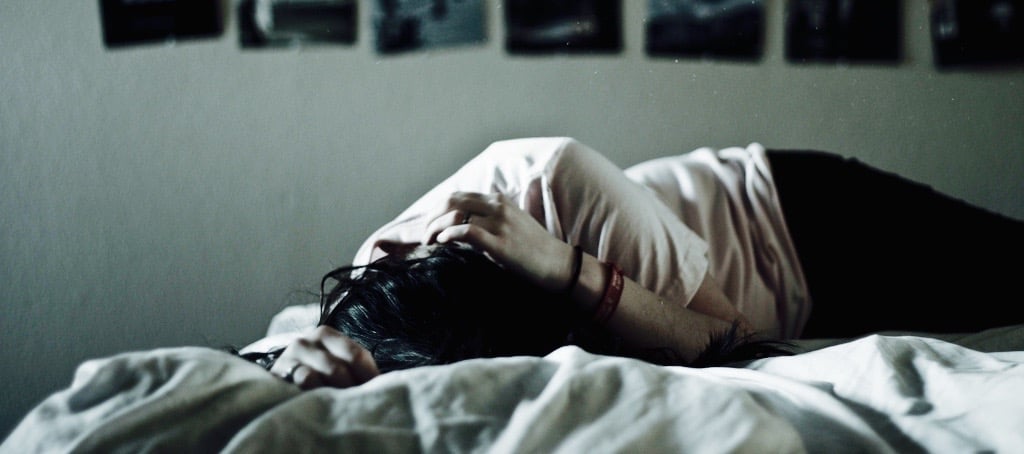Mental illness is not, by itself, a predictor of future violent behavior against others. Even people suffering from severe forms of schizophrenia or bipolar disorder are not any more likely than the average person to carry out a shooting or other violent act — provided they do not possess other high-risk factors, such as substance abuse or childhood trauma.
But that’s not the message portrayed in news coverage of the mentally ill. A new study published Monday in the journal Health Affairs found that news coverage disproportionately associates mental illness with violence. The study, by researchers at Johns Hopkins University, examined 400 articles and television programs about mental illness published by the New York Times, the Washington Post, and CNN from 1995 to 2014.
The study found that more than half of mental illness coverage, 55 percent of the stories, centered on violence. The stories were also more likely to focus on mentally ill individuals hurting others (38 percent) rather than hurting themselves (29 percent).
A mentally ill person is much more likely to harm themselves than someone else. More than 90 percent of people who kill themselves have a diagnosable mental disorder. Less than 4 percent of violent acts are carried out by someone who is mentally ill.
But if you read the news or watch television, you would think that the mentally ill pose a special danger to society, Dr. Emma McGinty, the lead author of the paper, tells The Trace.
“I think it’s become such a part of public dialogue that serious mental illness always plays a role in this kind of violence that it has become an assumption among the public,” McGinty says.
In stories from the sample about mental illness that featured a violent attack on others, the most common events depicted were incidences of gun violence — specifically violence against family members, mass shootings, and school shootings. Descriptions of mass shootings by individuals with mental illness more than doubled over a 20-year period, from 9 percent of all news stories from 1994 to 2004, to 22 percent of all stories from 2005 to 2014.
This trend coincides with a spike in high-profile shootings that attracted widespread news coverage.
McGinty calls the increase in coverage that links shootings and mental illness “concerning.” Just 7 percent of stories in the study period covered successful treatment or recovery by a person with mental health issues, she says.
Linking mental illness to serious acts of violence has been found to increase the stigma of mental illness, despite the fact that most individuals with mental disorders are at low risk of attacking others.
“When there’s this intense focus on people with mental illness as dangerous, it just increases negative stereotyping, which makes it difficult for people to ask for help,” Dr. Liza Gold, a clinical professor of psychiatry at the Georgetown University School of Medicine and editor of the forthcoming Gun Violence and Mental Illness, told The Trace in November.
A 2009 study of more than 34,000 participants in the National Epidemiologic Survey on Alcohol and Related Conditions found that people with mental illnesses are more likely than the general population to have suffered physical or mental abuse, be unemployed, have a parent with an arrest record, or have drug or alcohol dependency. It is these factors, not mental illness itself, that are more likely to present in people who carry out violent gun crimes.
Since 1968, people who have been involuntarily committed to a mental institution have been banned from owning firearms.
Another study, also published in the Monday issue of Health Affairs, found mixed evidence on whether prohibiting the mentally ill from buying guns is an effective violence-reduction strategy. Jeffrey Swanson, a researcher at Duke University, examined the impact of a Florida law that allowed state health agencies to submit mental health records to a screening database used for federal background checks. He found that while violent crime arrest rates among a population of 81,704 adults with mental illness fell after the legislation passed, gun-related violent crime among the same population remained constant.
McGinty says that equating mental illness with violence pushes the myth that strengthening gun prohibitions for mentally ill individuals will reduce gun deaths, possibly at the expense of policies that focus more on treatment and recovery.
McGinty says she was particularly dismayed by media coverage of Adam Lanza, the shooter responsible for killing 20 schoolchildren and six adult staff members at Sandy Hook Elementary School. Many news articles in the immediate aftermath of the massacre described Lanza as mentally ill, without evidence. Though a later report found that he had demonstrated signs of “severe and deteriorating” mental health problems, the initial flood of coverage reinforced prejudices against the mentally ill, McGinty says.
“Linking mental illness with violence increases people’s fear of this population,” she says. “As a result of that error, it leads to social stigma.”
[Photo: Shutterstock]


